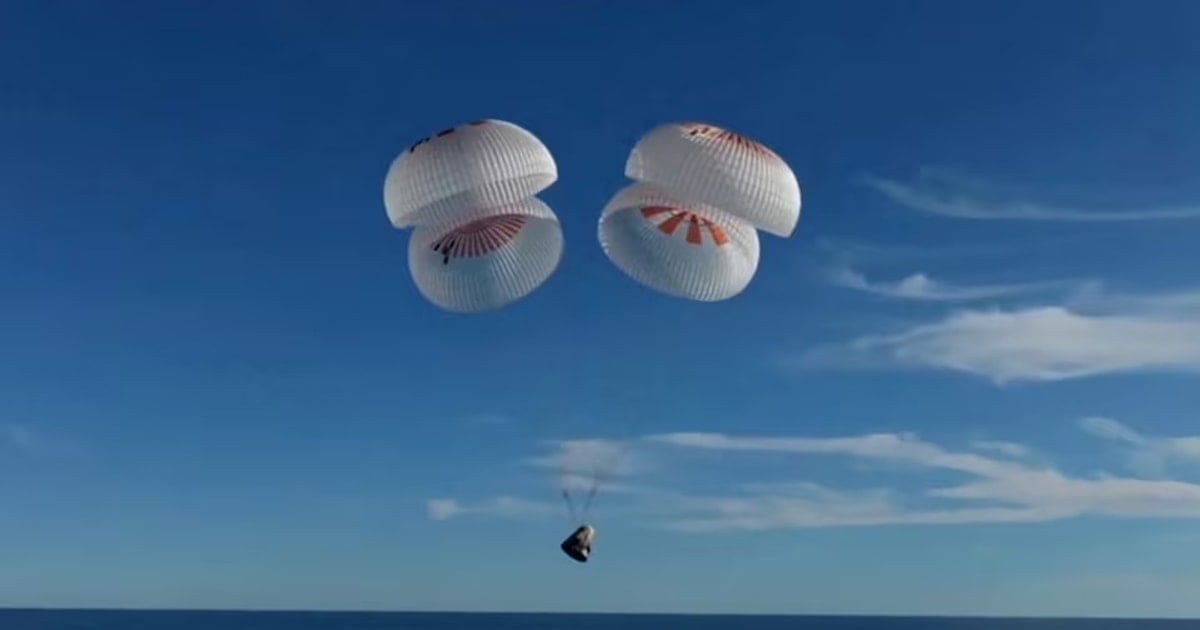The sixth test flight of Starship was not as successful as the fifth, because the booster stage was unexpectedly recaptured by the robotic arm. Instead of landing on the launch pad, the Starship booster stage, Super Heavy, fell into the ocean, exploding into pieces. The upper stage, the Starship spacecraft, also suffered the same fate, albeit with a softer landing.
SpaceX's mission now is to recover the debris of the experimental spacecraft from the coast off western Australia, and from there gain more data and experience for future launches.
Video of the Starship debris recovery process. (Video: Interstellar Gateway)
Based on the investigation of the content creator specializing in SpaceX Interstellar Gateway, SpaceX will salvage the entire Starship with many careful preparation steps.
“ This is the first time we’ve seen a specially equipped towboat, suggesting SpaceX is preparing to bring the entire Starship back to port. During our observation at the port, we saw that they had all the cables, equipment needed to tow the ship, and a staging area with a crane ready to lift Starship from the water ,” Interstellar Gateway told Gizmodo.
SpaceX previously stunned the world with its fifth orbital flight test of Starship in October. After reaching space, the rocket’s lower stage, Super Heavy, made a controlled landing on the ground, navigated itself back to the launch pad, and was caught in mid-air by mechanical arms – an impressive feat of engineering.
However, in its latest test in November, the rocket failed to replicate this success. Just four minutes after launch, SpaceX was forced to abort the booster launch, causing it to fall into the Gulf of Mexico and explode upon hitting the water.

The moment the Starship "landed" in the sea during its 6th test flight. (Photo: SpaceX)
Meanwhile, the upper stage—the Starship—demonstrated the ability to re-ignite one of its thrusters in space and make a gentle, controlled landing in the ocean. It still caught fire and broke apart after hitting the water, though it was not completely destroyed like the lower stage.
Besides the goal of increasing the reusability of future launches, SpaceX has another motivation to recover the Starship intact.
“ SpaceX can only collect a limited amount of data from Starship via Starlink transmission, as the ship always sinks immediately after landing. Just as the valuable data collected from the first booster stage is captured and preserved intact, returning Starship to land will help detect a series of structural errors and unobservable issues ,” and thereby gain valuable experience for subsequent tests.
The next Starship launch is expected to take place as early as January 11 next year.
Source


![[Photo] "Beauties" participate in the parade rehearsal at Bien Hoa airport](https://vstatic.vietnam.vn/vietnam/resource/IMAGE/2025/4/11/155502af3384431e918de0e2e585d13a)


![[Photo] Looking back at the impressive moments of the Vietnamese rescue team in Myanmar](https://vstatic.vietnam.vn/vietnam/resource/IMAGE/2025/4/11/5623ca902a934e19b604c718265249d0)



























![[Photo] Summary of parade practice in preparation for the April 30th celebration](https://vstatic.vietnam.vn/vietnam/resource/IMAGE/2025/4/11/78cfee0f2cc045b387ff1a4362b5950f)


























































Comment (0)